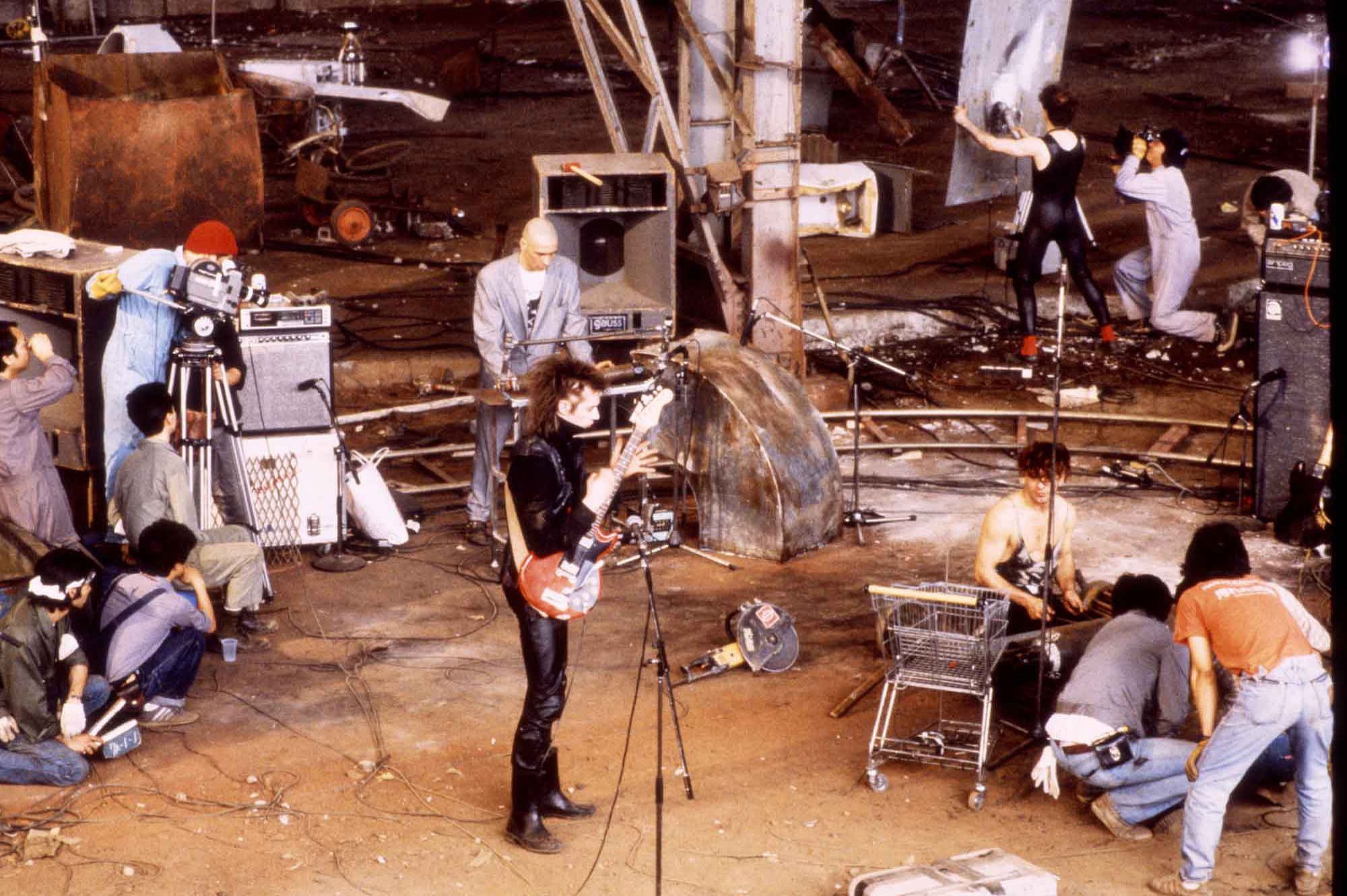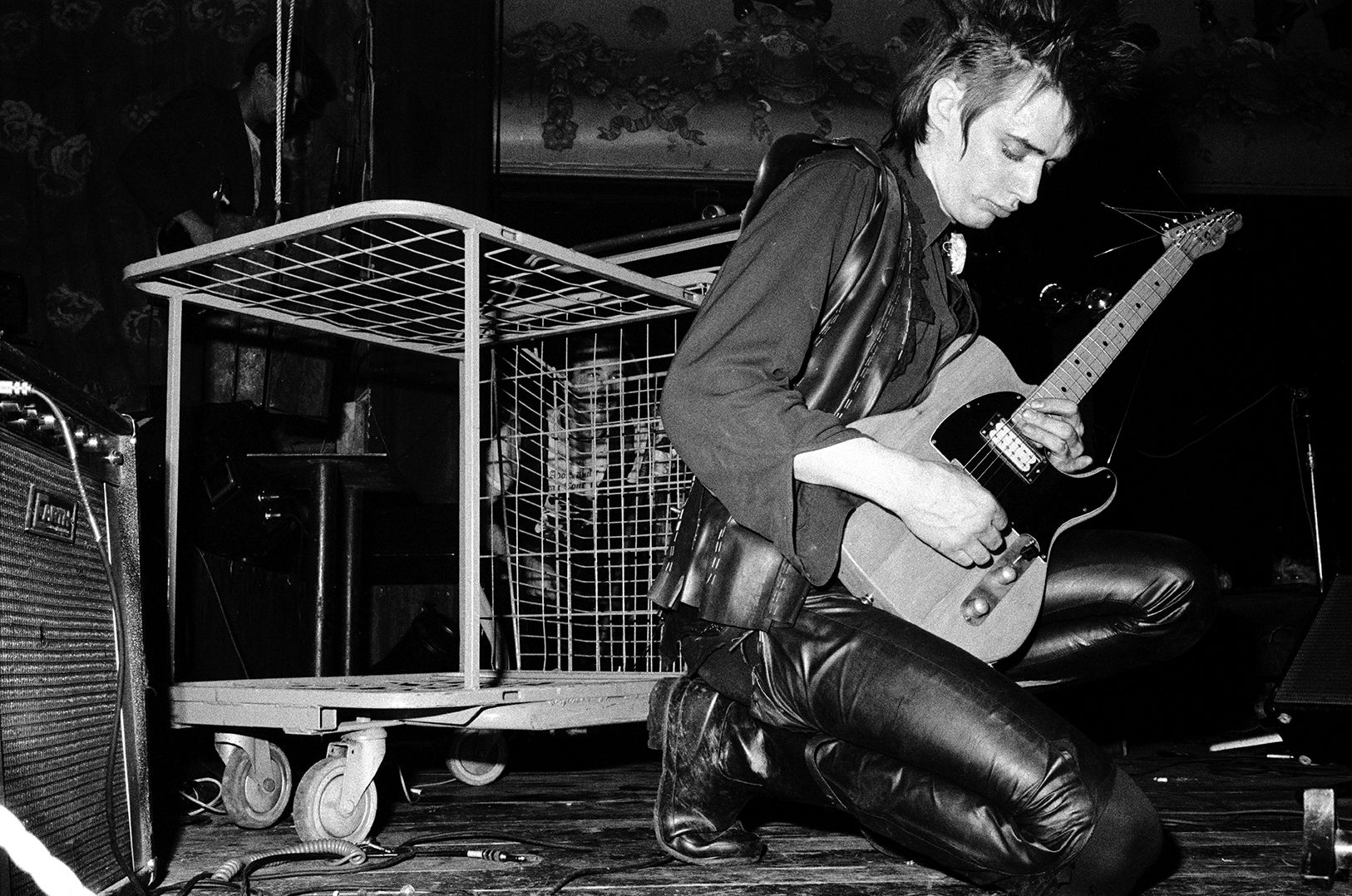This strange, enthralling and boggling collaboration between Japanese filmmaker Sogo Ishii and German experimental band Einsturzende Neubauten documents the blending of cultures through art and action.

Sogo Ishii, unbeknownst to many, was an important contributor to the Japanese cyberpunk trend that became popular in the 1990’s. His films Crazy Thunder Road and Burst City pre-date films like Akira, which popularised the anime biker/punk aesthetic. However, Ishii had a difficult and unappreciated early career. He borrowed film equipment from his university until they kicked him out, spent years struggling to find funding to make features and toggled between film and music in his career path.
It was during one of his down periods, when funding had dried up and ideas had run low, that Ishii made Halber Mensch. Loosely translated as ‘half a man’, the film is an hour-long documentation of German band Einsturzende Neubauten’s visit to Japan, in which they play songs from their album of the same name as the film. Growing up with punk music and heavily contributing to his hometown scene both in music and film, Ishii was the perfect director for this chaotic, anarchistic and wildly experimental band.
Einsturzende Neubauten, which translates to ‘collapsing new buildings’, was founded in Berlin in 1980 by Blixa Bargeld, who would later join Nick Cave and The Bad Seeds. The group went through various lineup changes, the most important being the addition of percussionist F.M Einheit in 1981. Together, Bargeld and Einheit created a sound that mainly utilised found objects and scrap. Not only was the banging of sticks on scrap metal a signature sound throughout their work, but the destruction of objects made up the ‘music’, whether it be taking a chainsaw to an oil drum or bashing in a shopping trolley. Over this came Bargeld’s lyrics, first childlike, horrific screams, then melodic German poetry.

Their 1985 album Halber Mensch marked a change in their sound. Still using found objects, metal scraps and power tools, their songs took on a more rhythmic quality, with Bargeld incorporating melody into his intensely delivered lyrics. Sogo Ishii’s film provides an invaluable document of this period of the band in the film, incorporating his own artistic endeavours while making sure the focus stays on the music.
The film revolves around the band’s performances in a large, abandoned warehouse. Wrapped in leather and with trademark wild hair, Blixa Bargeld screams and shouts into the mic and strolls around the warehouse mangling his guitar with a sardonic smile. The rest of the band carve circles into hung up sheets of scrap metal, pound on rubber cylinders and kick and bash trolleys.
Tracks like ‘Armenia’ are like no other genre of music, whirlwinds of destruction and screams, while ‘ZNS’ features rhythm and repetitions whilst retaining an avant-garde tilt. These recordings form a solid basis for the film, a pure representation of the band from which the performers and Ishii can branch out.

As the film progresses, it becomes more avant-garde and experimental. ‘ZNS’ expands into a sort of music video, featuring Butoh dancers and the band interacting in strange, erotic scenarios. ‘Halber Mensch’, the title track, becomes a Lynchian dream scenario with worms crawling over Einheit’s foot and Bargeld facing off with a ghostly figure. These scenes may be considered unnecessary and too typical of the MTV music video style the band spent their career avoiding. But these artistic offshoots are kept minimal, and do add texture to the overall film.
The film also incorporates live performances of the band in Japan to enthusiastic and even obsessive audiences. ‘Der Tod Ist Ein D’ evolves into a spectacle, with the band destroying their instruments as Bargeld strolls around the stage declaiming, ‘this was made to end all parties’ to a baffled yet enthralled audience. Neubauten’s performances and ideas can be compared to the Dadaist activates of the 1920’s, art as anti-art and music as anti-music, with shows and performances devolving into chaotic interactive experiences. Furthermore, their use of found objects and scrap can be considered a statement on post-war society, the disarray Germany was left in following their defeat and the struggle of rebuilding.
The Einsturzende Neubauten of Halber Mensch no longer exists. From the 90’s onwards the band has continued to evolve in their style and message, taking on a more formal appearance and working on film soundtracks as well as their own music. Sogo Ishii’s output has also slowed down and changed, with his high-paced punk aesthetic disappearing in favour of storytelling. This is the case with all artists, and their evolution is integral to their continued success and ongoing interest to the public. It will always be fascinating, however, to look at a time that was, especially in a film like Halber Mensch where cultures, music, art and film are explored and captured.
Subscribe to FIB’s Weekly Alchemy Report for your weekly dose of music, fashion and pop culture news!







